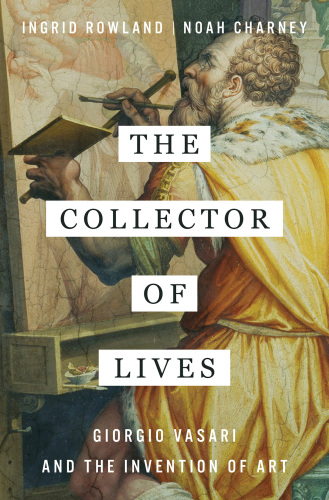
The Collector of Lives
Giorgio Vasari and the Invention of Art
کتاب های مرتبط
- اطلاعات
- نقد و بررسی
- دیدگاه کاربران
نقد و بررسی

September 1, 2017
The life and times of a true Renaissance man who knew everyone--and immortalized them forever.Art history, by general consensus, began the day an Italian painter named Giorgio Vasari (1511-1574) set out to write a subjective yet deeply informed series of sketches of all the major and minor players in Italian art up to his time. The result was The Lives of Most Excellent Painters, Sculptors, and Architects, a foundational text that would establish a pantheon of greatness for centuries to come. In this absorbing and well-researched biography, two experienced art historians--Rowland (Art, Architecture, and Classics/Univ. of Notre Dame Rome Global Gateway; From Pompeii: The Afterlife of a Roman Town, 2014, etc.) and Charney (The Art of Forgery: The Minds, Motives and Methods of the Master Forgers, 2015, etc.)--map out the endlessly industrious life of one of the original gatekeepers of Western civilization. Although a superb painter who never lacked for work, Vasari regarded himself as minor league. He knew what greatness was and devoted his literary life to explaining it, using Michelangelo, his hero and friend, da Vinci, Titian, Giotto, Cellini, and dozens of others as examples, both pro and con. Vasari set standards by which some artists would live forever and others (not always fairly) would be cast into outer darkness. He was also an early celebrity journalist, although his subjects weren't famous. In Vasari's day, the authors write, artists were "mostly manual workers with a spotty education and intensive technical training; by conventional standards, the meanness of their hardscrabble, hardworking lives could hold no interest for aristocratic writers and readers." Vasari not only made them interesting; he made them gods. Although his facts were sometimes wrong and judgments flawed, he helped create the idea of Art with a capital A. Rowland and Charney do more than deliver a richly detailed life of this singular Renaissance figure. They raise intriguing questions about how tastes and standards develop.
COPYRIGHT(2017) Kirkus Reviews, ALL RIGHTS RESERVED.

September 1, 2017
Art historians Rowland and Charney lure readers in with a mystery of Dan Brown proportions, but this oneabout a Leonardo da Vinci painting that may be hidden beneath the frescoes Giorgio Vasari painted on the walls of a Florentine palaceis real. Suspense gives way to a biography of Vasari, a Renaissance painter better known as a biographer who originated the field of art history by writing about his compatriots in the oft-cited Lives of the Most Excellent Painters, Sculptors, and Architects. Rowland and Charney interweave the story of Vasari's own life with their accounts of the artists he wrote about within a wider look at the politics and culture of sixteenth-century Italy. Events like the Sack of Rome, in 1527, and the Game of Thrones-esque murder of Alessandro de Medici make for an exciting read. But Rowland and Charney are at their best when explaining the workings of the sixteenth-century art world, from the patronage system to the period propensity for copying masterpieces to the importance of disegno (drawing) to the market for pigments imported along the Silk Road.(Reprinted with permission of Booklist, copyright 2017, American Library Association.)

























دیدگاه کاربران